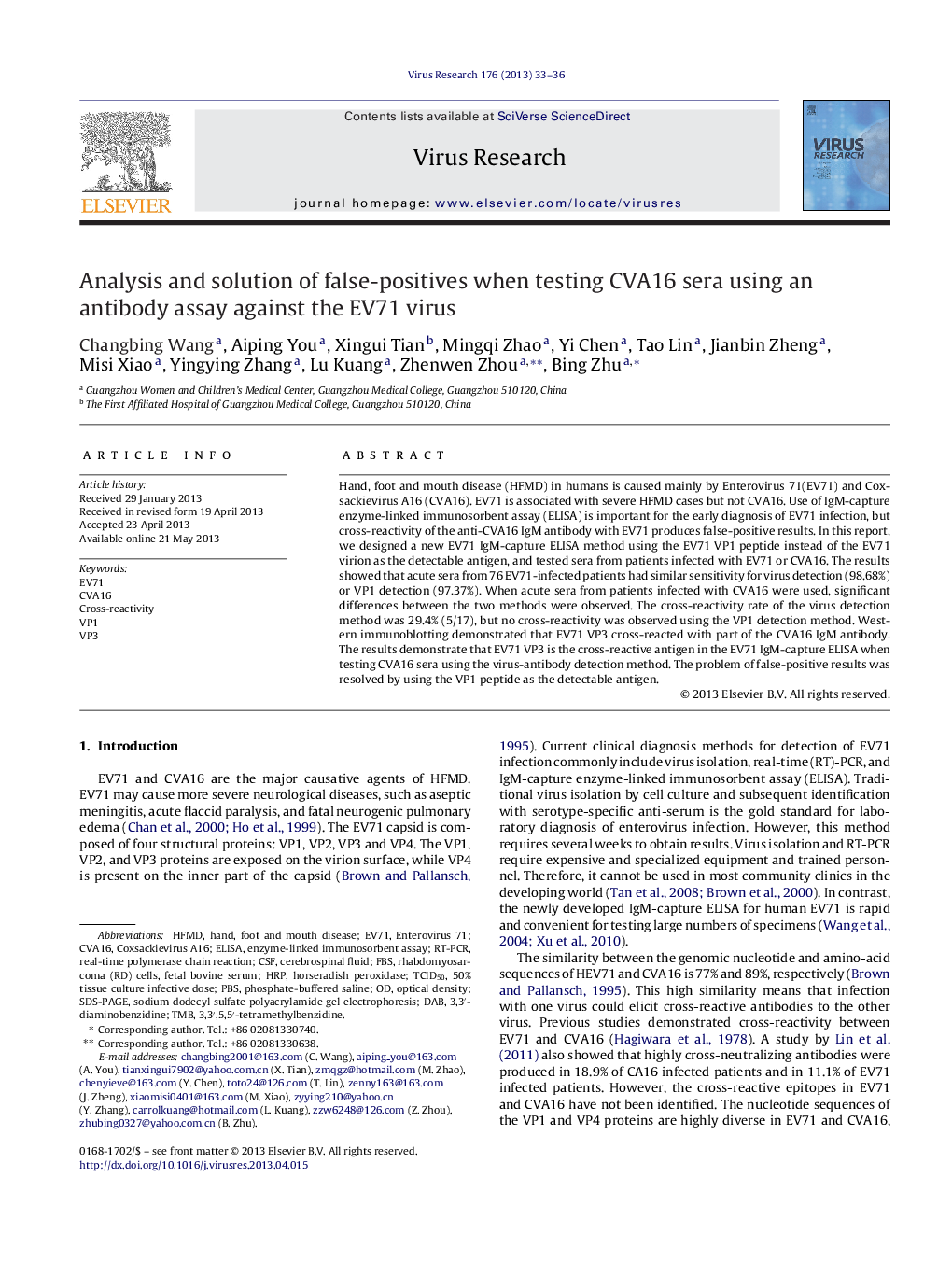| Article ID | Journal | Published Year | Pages | File Type |
|---|---|---|---|---|
| 6142947 | Virus Research | 2013 | 4 Pages |
â¢The VP3 is the cross-reacting antigen in the EV71 IgM-capture ELISA with CVA16 serum.â¢The VP1 detection method is as sensitive as the virus-antibody detection method.â¢The VP1 detection method can resolve the false-positive problem.
Hand, foot and mouth disease (HFMD) in humans is caused mainly by Enterovirus 71(EV71) and Coxsackievirus A16 (CVA16). EV71 is associated with severe HFMD cases but not CVA16. Use of IgM-capture enzyme-linked immunosorbent assay (ELISA) is important for the early diagnosis of EV71 infection, but cross-reactivity of the anti-CVA16 IgM antibody with EV71 produces false-positive results. In this report, we designed a new EV71 IgM-capture ELISA method using the EV71 VP1 peptide instead of the EV71 virion as the detectable antigen, and tested sera from patients infected with EV71 or CVA16. The results showed that acute sera from 76 EV71-infected patients had similar sensitivity for virus detection (98.68%) or VP1 detection (97.37%). When acute sera from patients infected with CVA16 were used, significant differences between the two methods were observed. The cross-reactivity rate of the virus detection method was 29.4% (5/17), but no cross-reactivity was observed using the VP1 detection method. Western immunoblotting demonstrated that EV71 VP3 cross-reacted with part of the CVA16 IgM antibody. The results demonstrate that EV71 VP3 is the cross-reactive antigen in the EV71 IgM-capture ELISA when testing CVA16 sera using the virus-antibody detection method. The problem of false-positive results was resolved by using the VP1 peptide as the detectable antigen.
